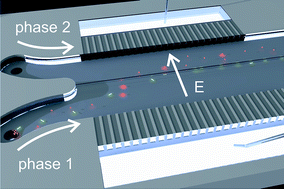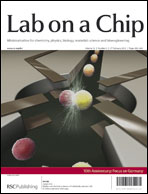An overview is given about research activities in which aqueous two phase systems (ATPSs) are utilized in microfluidic setups. ATPSs consist of two immiscible aqueous phases and have traditionally been used for the separation and purification of biological material such as proteins or cells. Microfluidic implementations of such schemes are usually based on a number of co-flowing streams of immiscible phases in a microchannel, thereby replacing the standard batch by flow-through processes. Some aspects of the stability of such flow patterns and the recovery of the phases at the channel exit are reviewed. Furthermore, the diffusive mass transfer and sample partitioning between the phases are discussed, and corresponding applications are highlighted. When diffusion is superposed by an applied electric field normal to the liquid/liquid interface, the transport processes are accelerated, and under specific conditions the interface acts as a size-selective filter for molecules. Finally, the activities involving droplet microflows of ATPSs are reviewed. By either forming ATPS droplets in an organic phase or a droplet of one aqueous phase inside the other, a range of applications has been demonstrated, extending from separation/purification schemes to the patterning of surfaces covered with cells.

You have access to this article
 Please wait while we load your content...
Something went wrong. Try again?
Please wait while we load your content...
Something went wrong. Try again?


 Please wait while we load your content...
Please wait while we load your content...